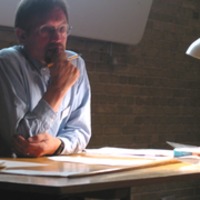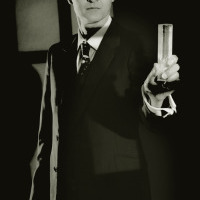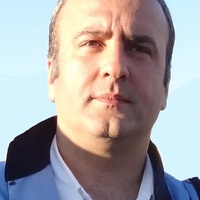Papers by Andreas Griesinger
Journal of electronics cooling and thermal control, 2021
Proceeding of International Heat Transfer Conference 11, 1998
Wärmemanagement in der Elektronik

International Journal of Heat and Mass Transfer, 1997
A pure radiative method is presented for measuring the directionally-dependent thermal diffusivit... more A pure radiative method is presented for measuring the directionally-dependent thermal diffusivities of anisotropic solids, especially of free-standing films. A real point and line source are realized by a focussed laser beam. Both configurations allow measurements of the anisotropic thermal diffusivity. Because of the smaller power density applied for the line source, this method is very suited for thermic sensitive films. Virtual image sources are used to account for the boundary conditions of a rectangular slab. The temperature vs time curves are recorded by infrared radiation using an InSb-detector. They are fitted to the solution for a constant heat source switched on at time zero (step heating) disregarding the prefactor. Thus, there is no need to know the absorption coefficient or the absolute temperature rise of the sample. The influence of sample dimensions and of radiative losses is investigated.

Heat and Mass Transfer, 1997
Es wird ein Meßverfahren zur gleichzeitigen Bestimmung der Wärme- und der Temperaturleitfähigkeit... more Es wird ein Meßverfahren zur gleichzeitigen Bestimmung der Wärme- und der Temperaturleitfähigkeit von geringen Stoffmengen beschrieben. Neben Messungen an hochviskosen Flüssigkeiten eignet sich das Verfahren besonders für Messungen an Pulver-Schüttungen. Das Meßverfahren basiert auf dem transienten Hitzdraht-Verfahren. In einem dünnen Platindraht fließt ein sinusförmiger Wechselstrom, der den Draht periodisch erwärmt. Es entstehen thermische Wellen, die in die umgebende Probe eindringen. Die Amplitude und die Phasenlage der thermischen Wellen in der Probe hängen von der Temperaturleitfähigkeit a und der Wärmeleitfähigkeit λ der Probe ab. Die Temperaturschwingung in der Probe wird mit Hilfe des Platindrahtes gemessen, der gleichzeitig als Widerstandsthermometer eingesetzt wird. Meßwerte von Wasser und Glycerin zeigen eine gute Übereinstimmung mit Literaturwerten. Das Meßverfahren zeichnet sich dadurch aus, daß zur Bestimmung der Wärme- und Temperaturleitfähigkeit nur 13 ml einer Probe benötigt werden. Es werden Meßwerte einer Zeolith-Schüttung unter Wasserstoffbeladung dargestellt. A measuring procedure for the simultaneous determination of the thermal conductivity and thermal diffusivity of small quantities is described. The procedure is suited for high-viscous fluids and for powdery material. The measuring principle is based on the transient hot-wire method. A sinusoidal alternating current flows through a thin platinum wire and heats up the wire periodically. This results in thermal waves, which penetrate into the surrounding sample. The amplitude and the phase shift of the thermal waves depend on the thermal diffusivity “a” and the thermal conductivity “λ” of the sample. The temperature oscillation in the sample is measured by means of the platinum wire, which is simultaneously applied as a resistance thermometer. The values measured for water and glycerine correspond well to those given in literature. Results of the effective thermal conductivity and the effective thermal diffusivity of zeolite powder under pressurized hydrogen are also discussed. The advantage of this measuring procedure is that only a sample of 13 ml is needed for the test.
International Journal of Heat and Mass Transfer, 1999
The use of zeolites as an adsorbent for water or ammonia in heat pumps and cooling systems is an ... more The use of zeolites as an adsorbent for water or ammonia in heat pumps and cooling systems is an interesting alternative to the traditional refrigerants. Recently, zeolites are also in discussion as hydrogen storage material. For all these applications the effective thermal conductivity of the zeolites is an important thermophysical property. The effective thermal conductivity λeff was measured by using
High Temperatures-high Pressures, 1997










Uploads
Papers by Andreas Griesinger